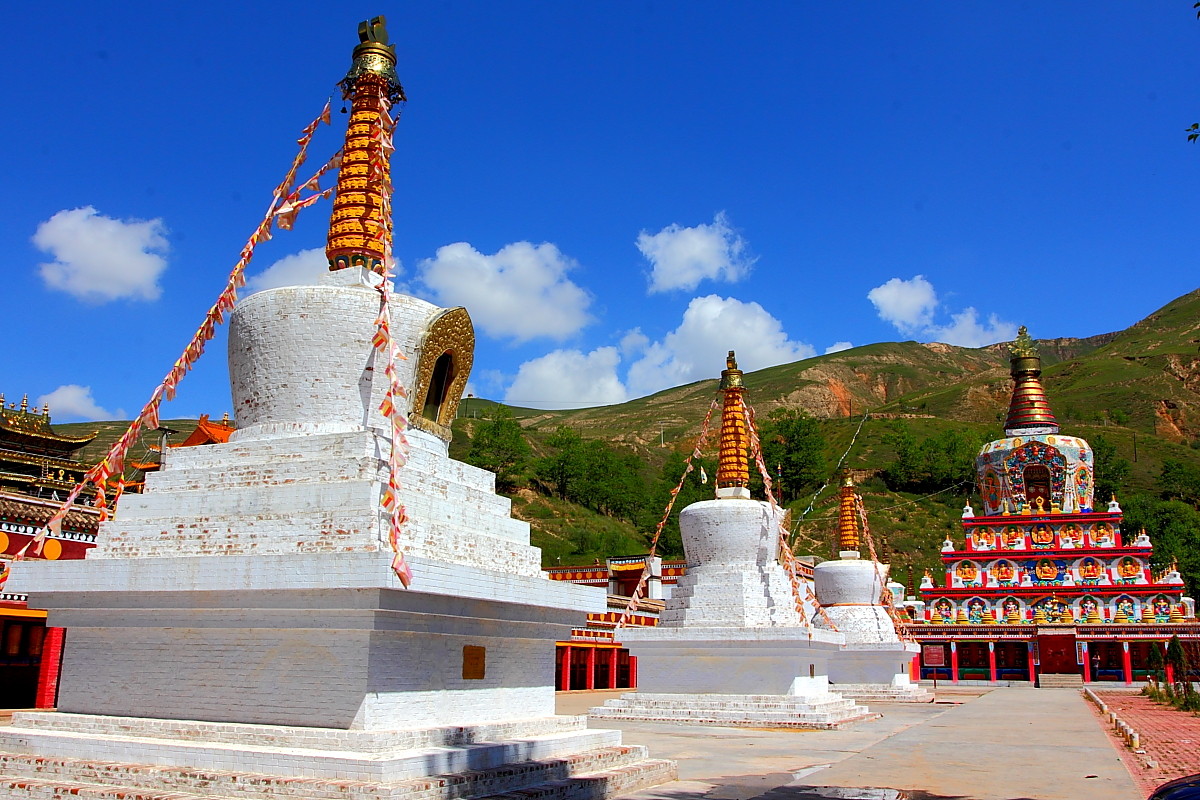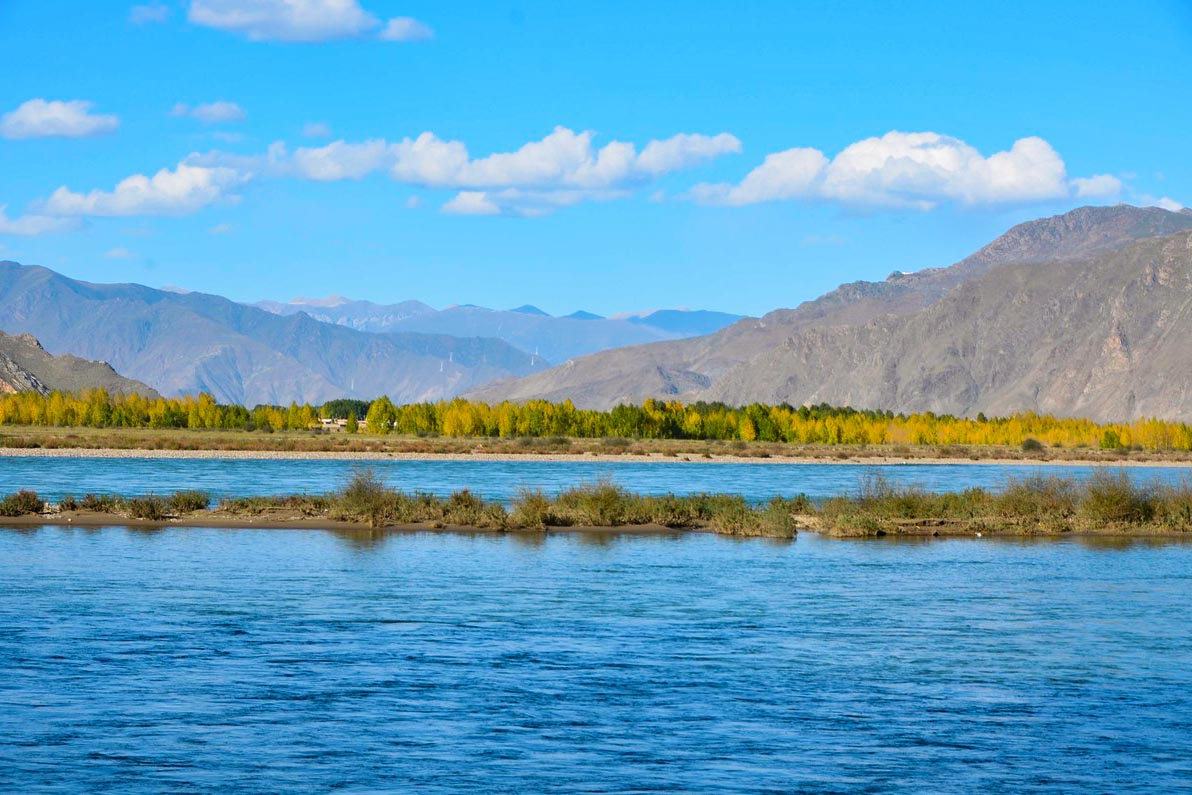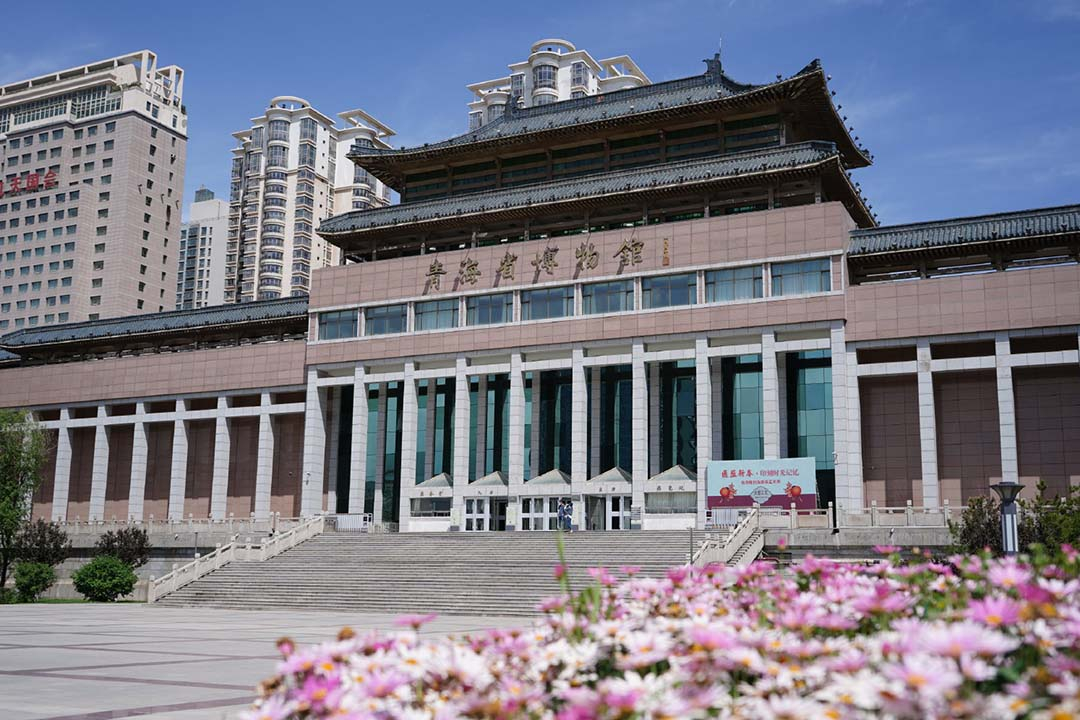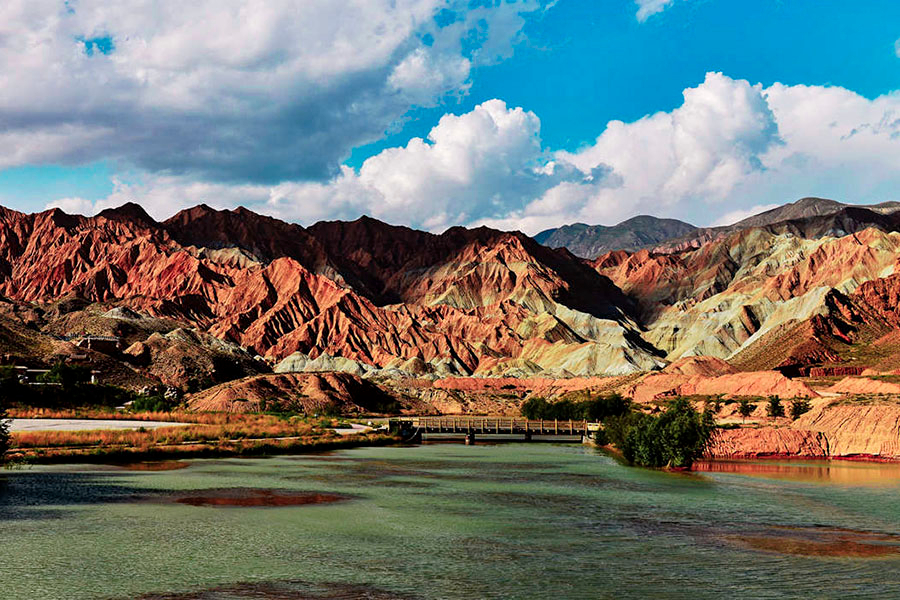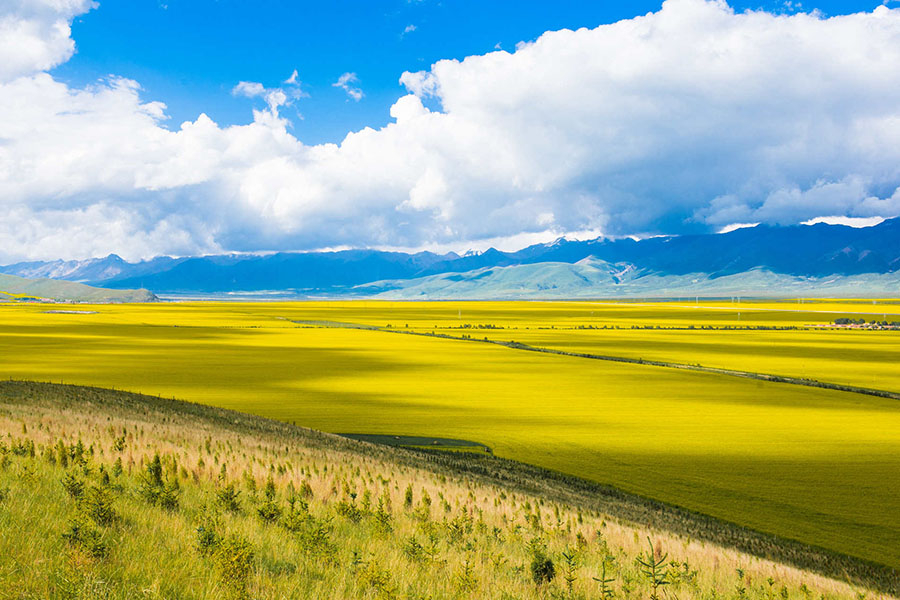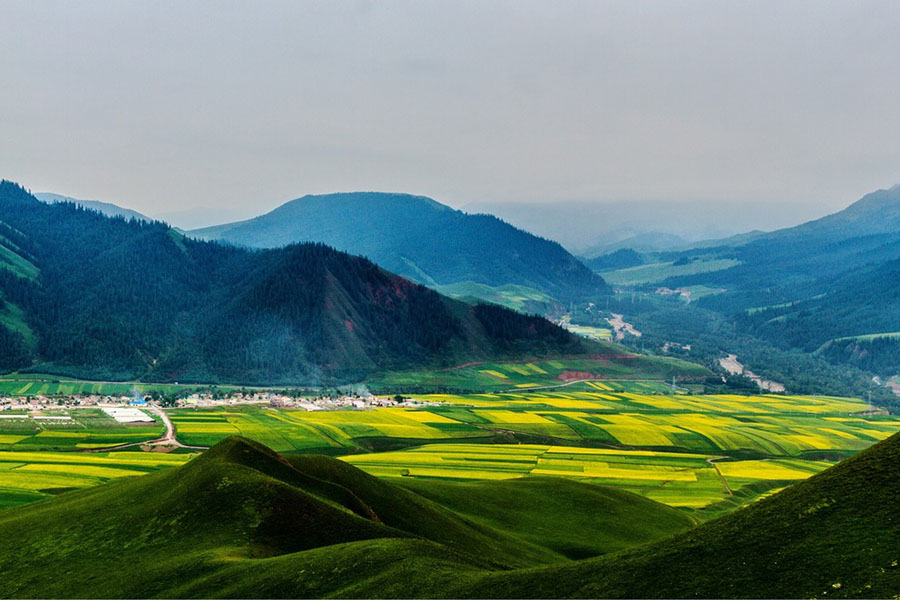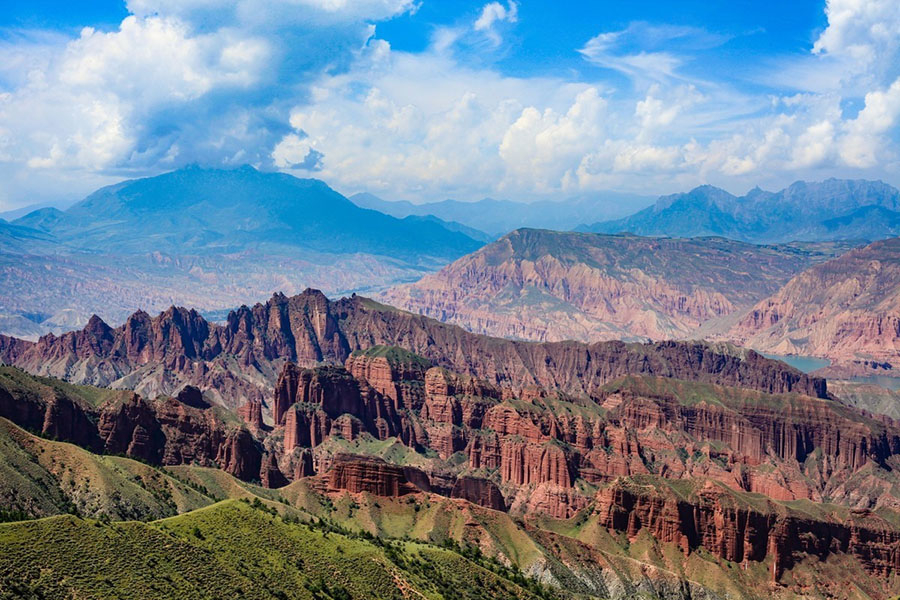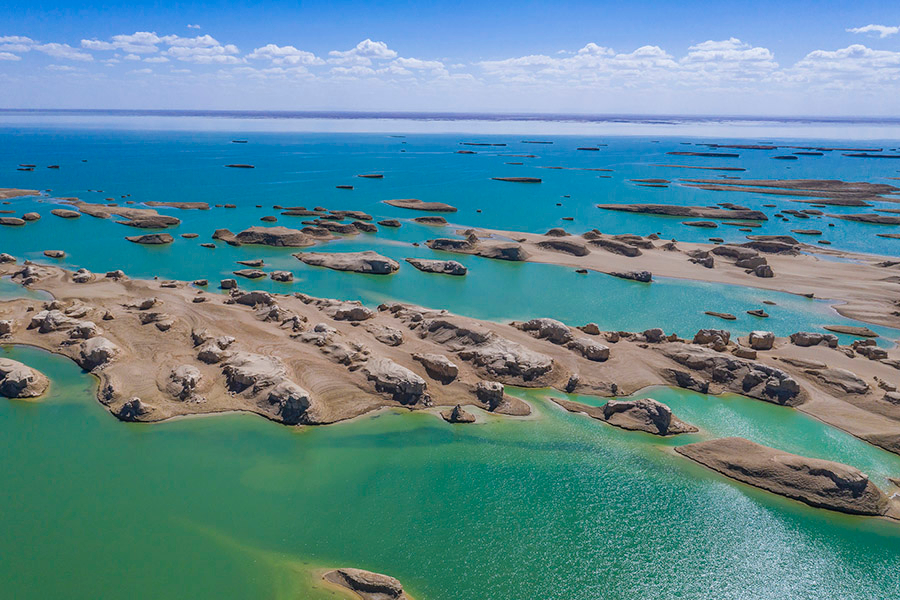Wutun Monasteries
Chinese name: 吾屯寺 (Wu Tun Si)
Location: Longwu Town, Tongren County,Qinghai Province.
Ticket: Entrance ticket CNY30.00
Estimated tour time:2-3hours
Recommended time to visit: May to Oct and Feb to see the Monlam Festival
Nearby attractions: Longwu Monastery, Regong Art Gallery, Guomary Monastery, Kanbula National Park, etc.
The Wutun Monasteries, being divided into the "lower" and "upper" temple, is a Tibetan Buddhist monastery in Tongren, Huangnan Prefecture. The temple is widely renowned across Qinghai, these two temples combine a comprehensive record of the religious history of Tongren and Qinghai. Wutun has upper and lower village lamaseries, each is 1 km away from the other, Wutun lamasery, Nianduhu lamasery, Guomari lamasery and Woke lamasery are called 'four village lamaseries of Longwu ' .
Its most famous monasteries are known for their Buddhist thangka painting. Wutong Monastery (五屯寺), With a reputation unequalled in the Tibetan world, many visitors come here exclusively to see the monastery's collection of centuries old Thangka paintings and watch the resident artists continuing the tradition. Though the art is undoubtedly the headliner the rebuilt grounds are a fine example of modern Tibetan architecture elaborately decorated with brightly painted wood carvings. The complex is divided into upper(上寺) and lower(下寺) monasteries, each with its own set of prayer halls, courtyards and artist studios. You can meet painters and buy thangkas at workshops within the monastery walls.
According to the record of Anduo Zhengjiao history, this temple was built around 1385. In the temple, there are copper figures of Master Zongkaba, Shijia Buddha, and scriptures such as Ganzhuer and so on. Shijia Hall and Mile Hall are newly built. Because Zhigeri'eren-bamahaimudawa, the fourth host of this temple is a disciple of the first Xiaricang, gadanjiacuo, so this temple is called descending temple of Longwu Temple. This temple is reputed as the cradle of 'art talent.' For a long time, this temple has cultivated groups of art talent for the society. Master hand and famous expert emerge in an endless stream. Presently, among monks of this temple, there are 22 painters. Xiawucairang, a famous old painter and art master, is a great master of one generation who has been a monk of this temple. Frescoes and statues of most temples in Tibetan area and Anduo Tibetan area are made by Wutun artists.
Wutun monastery is the one that collects the most typical and largest quantity of Regong artistic works. Regong art originated in the 15th Century around the Longwu River basin, in what is today Tongren County, a part of Qinghai Province's Huangnan Tibetan Autonomous Prefecture. Over the centuries Tongren County has cultivated numerous folk artists engaged in Buddhist painting and sculpture, hence its reputation as "Hhe Home of Tibetan Painters. "Tongren in the Tibetan language is referred to as "Regong,"so local art forms are together called "Regong art." In part because this place is the home of Regong art, each year Huangnan prefecture attracts a large number of visitors from both home and abroad. It has become the third hottest tourist destination in Qinghai Province, only after the Qinghai Lake and the Kumbum Monastery.
Many distinguished Regong artistic works are preserved in Wutun Temple. Of the fresco, heap embroidery, colored painting, and sculpture in this temple, the painting is delicate and the color is bright. The painting and color fully display the fluency and sense of rhythm of line, and third dimension and dynamic sense of picture. Its strong artistic infectivity enjoys high reputation in tourism kingdom.
- HOTEST
- RECOMMEND
